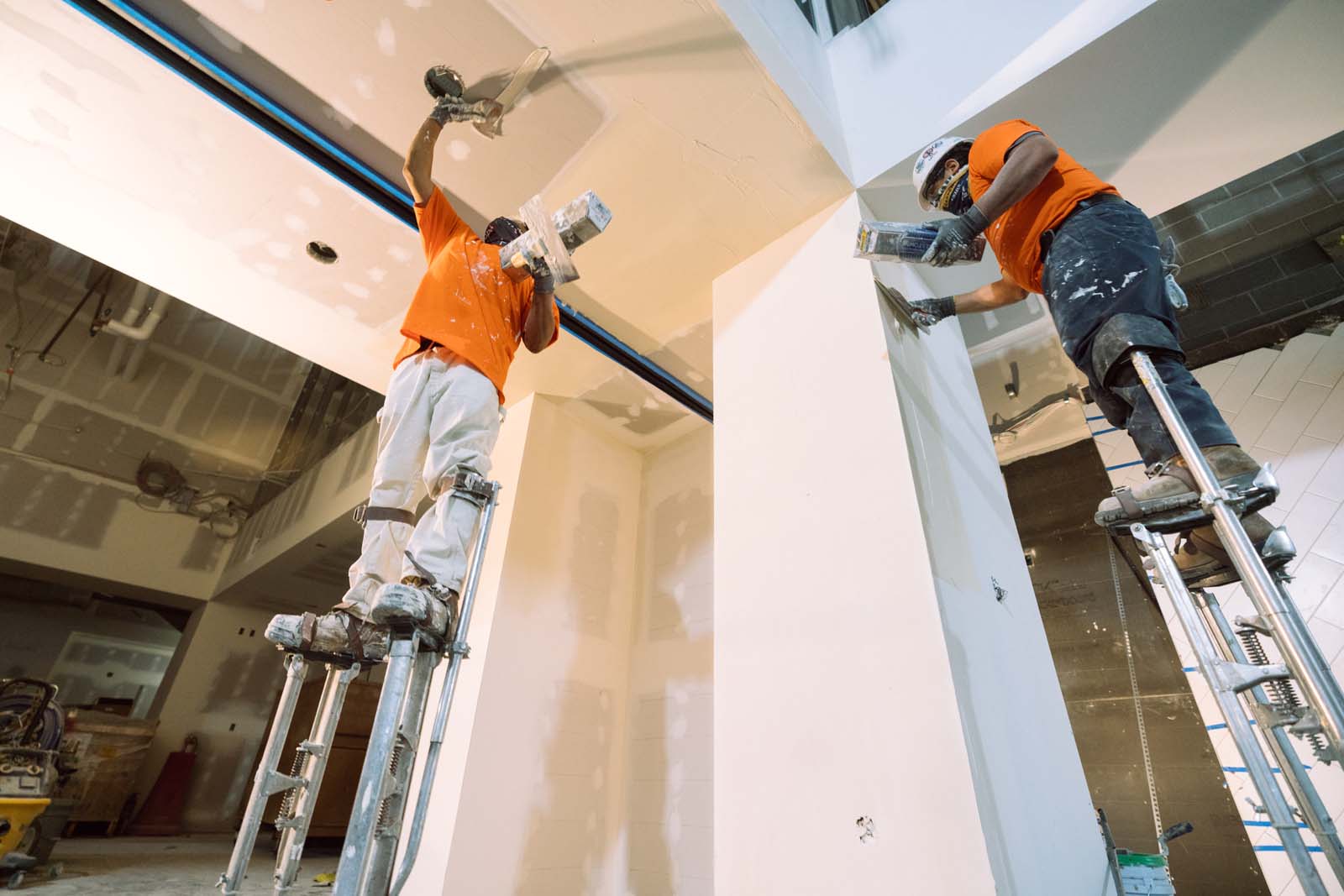Specialist Sheetrock Repair Fort Worth for Quick Fixes
Drywall Setup Facilitated: Tips for Perfect Results
Drywall installation is often viewed as an overwhelming job, yet with the right technique and expertise, it can come to be a workable venture. Mastering techniques for cutting, hanging, and finishing drywall can substantially influence the end result.
Selecting the Right Products
Selecting the suitable products for drywall setup is critical to attaining a durable and visually pleasing finish. sheetrock repair fort worth. The primary element, drywall sheets, commonly come in various thicknesses, with 1/2-inch sheets being common for indoor walls. For locations calling for additional dampness resistance, such as cooking areas or restrooms, take into consideration making use of environment-friendly board or concrete board, which are specially made to hold up against moisture

Additionally, selecting the best fasteners-- either screws or nails-- is vital for securing the drywall to the framework. Drywall screws are generally preferred for their holding power and reduced risk of standing out. Take into consideration the finishing touches such as guide and paint, which not just boost the appearance yet likewise shield the drywall from dampness and wear.
Preparing the Setup Location
Prior to beginning the drywall installment procedure, it is essential to prepare the installation location thoroughly. A tidy work area lessens the threat of damages to existing products and enables for efficient activity during installment.
Next, check the walls and ceiling for any type of imperfections, such as cracks, openings, or mold and mildew. Address these concerns beforehand; patch any kind of damages and enable sufficient time for repairs to dry. In addition, ensure that electrical outlets, buttons, and plumbing are effectively placed and represented, as this will certainly impact drywall placement.
Think about the ecological problems as well. A secure temperature level and humidity level are important for optimum adhesion and performance of the drywall products. Use a dehumidifier or heating system to produce appropriate conditions. if needed.
Trimming and Hanging Drywall
The secret to effective drywall installation hinges on the accurate cutting and hanging of the panels. Begin by gauging the area precisely, taking into consideration any blockages such as electric outlets or windows. Utilize a straight edge and an utility knife to score the drywall along your dimensions, after that break it along the scored line for a clean break. For more detailed cuts, such as around outlets, a drywall saw can be made use of for accuracy.

Always work from the top down and delegated right, making certain that you keep a staggered pattern to enhance security. Properly hanging the drywall establishes the foundation for a smooth surface, eventually bring about remarkable outcomes in your drywall task.
Taping and Mudding Strategies
While correct cutting and hanging of drywall sets the stage, the next vital step look here involves grasping taping and mudding methods to guarantee a seamless coating. Insulation is essential for strengthening joints and stopping fractures; it includes installing tape right into the applied joint substance (mud) Begin with a quality fiberglass or paper tape, using the tape over the joint and pressing it into the damp mud using a taping blade, guaranteeing no air bubbles stay.
When the tape is in location, use a thin layer of joint compound over the tape, feathering the sides to create a smooth transition to the drywall surface area. Allow this layer to completely dry entirely before sanding it lightly to get rid of flaws. Repeat this process, using added coats of mud as necessary-- normally 2 to three layers-- while slowly expanding the application location with each layer to attain a seamless appearance.
After the last coat dries, sand the surface area with a fine-grit sandpaper until smooth. drywall contractor. Remember to put on a mask throughout fining sand to stay clear of inhaling dust particles. Grasping these taping and mudding strategies is critical for achieving a professional-quality surface in your drywall installment
Completing Touches for Excellence
Achieving a perfect drywall installment surpasses mudding and taping; it culminates in the completing touches that raise the general appearance. These final steps are vital in making certain a professional-grade surface that enhances the aesthetics of your space.
Begin by fining sand the dried joint compound to produce a smooth surface. Use a fine-grit sandpaper and a fining sand block or pole sander for ideal control. Pay particular interest to sides and edges, as these areas tend to need even more thorough work. After fining sand, clean down the walls with a damp fabric to remove any kind of dust fragments, making sure a tidy surface area for paint.
Next, apply a guide especially made for drywall. This step is necessary, as it helps seal the joint compound and gives a consistent base for the overcoat. As soon as the guide dries, check for any type of flaws, and retouch as needed.
Final Thought
Finally, effective drywall installment pivots on the cautious selection of products, browse around here extensive preparation of the setup area, and precise implementation of reducing and hanging strategies. Mastery of taping and mudding processes is important for attaining a smooth finish. Furthermore, attention to finishing touches, consisting of priming and touch-ups, makes certain a professional-grade result. By adhering to these guidelines, the quality of handiwork can be significantly boosted, adding to the overall aesthetic and performance of the room.
Drywall installation is frequently perceived as a challenging job, yet with the ideal technique and understanding, it can become a convenient endeavor.Choosing the suitable materials for drywall installation is vital to accomplishing a sturdy and aesthetically pleasing surface.Before starting the drywall installment process, it is crucial to prepare the setup why not try these out area extensively. Understanding these taping and mudding methods is crucial for achieving a professional-quality finish in your drywall installation.
In verdict, successful drywall installation pivots on the careful option of products, thorough preparation of the setup location, and specific implementation of cutting and hanging strategies.